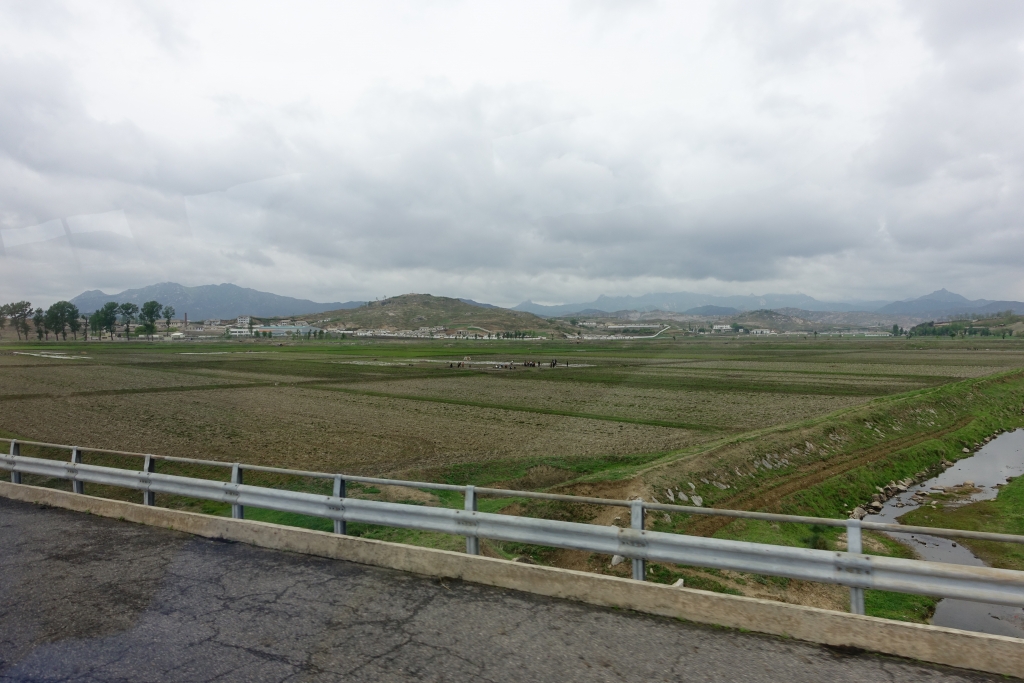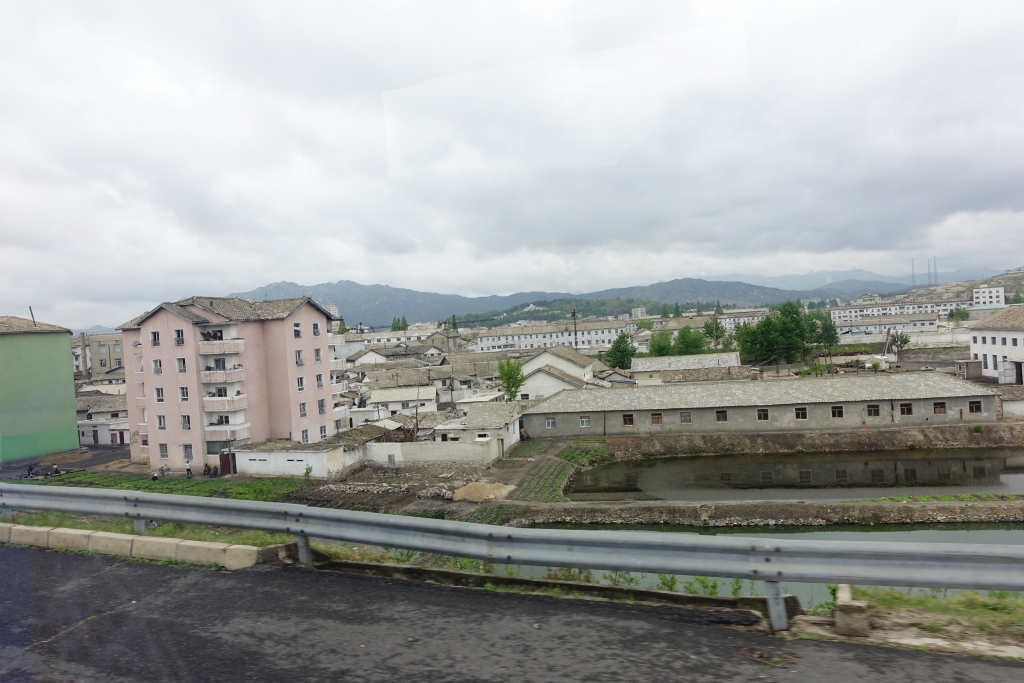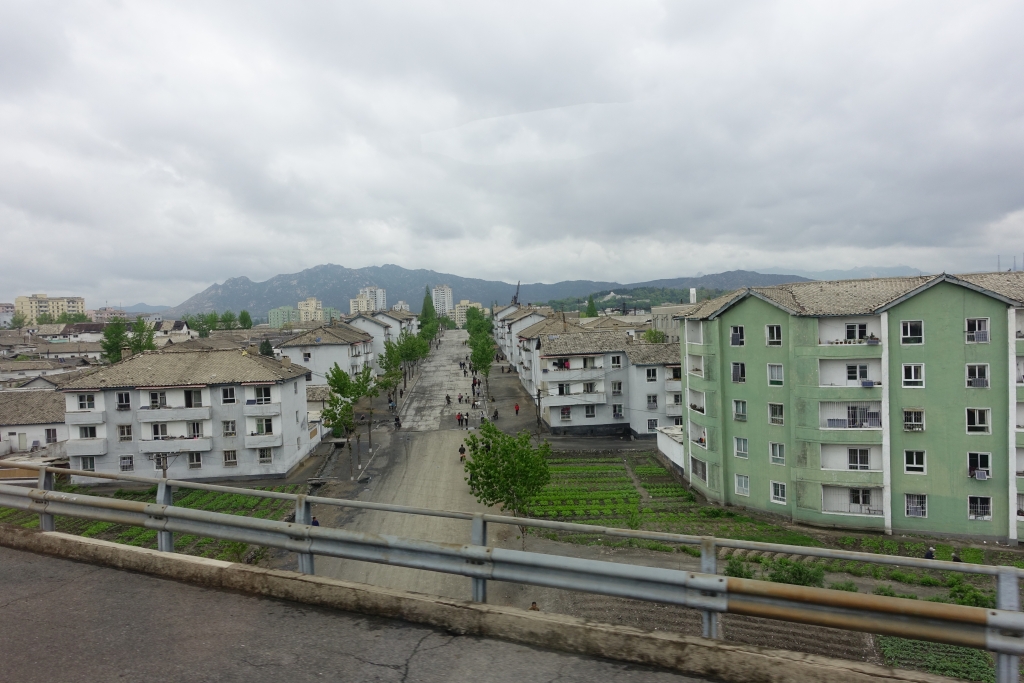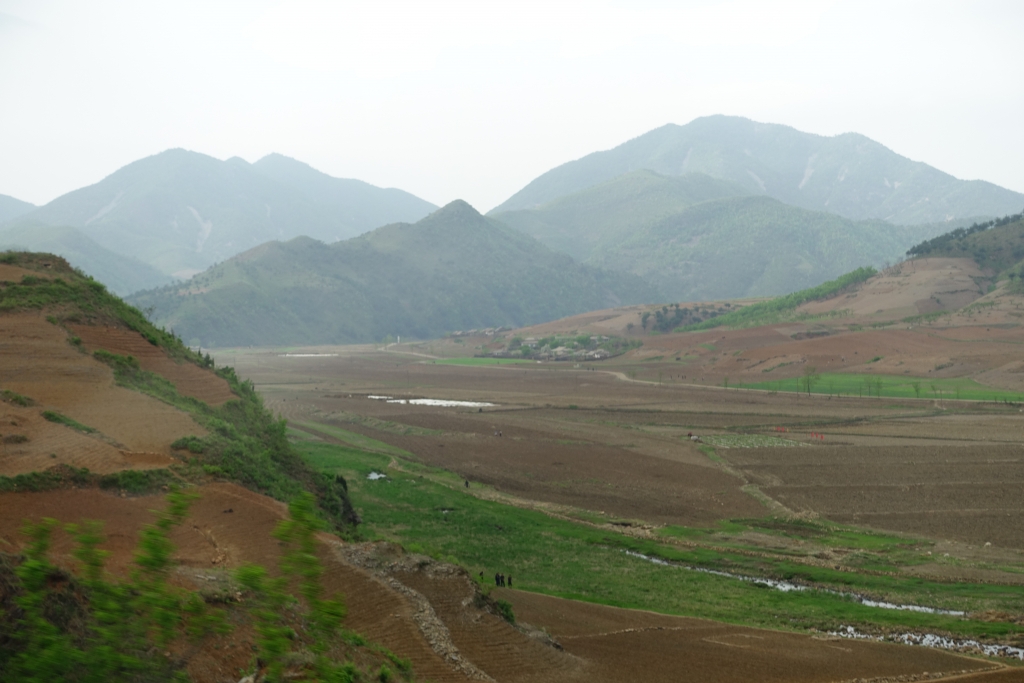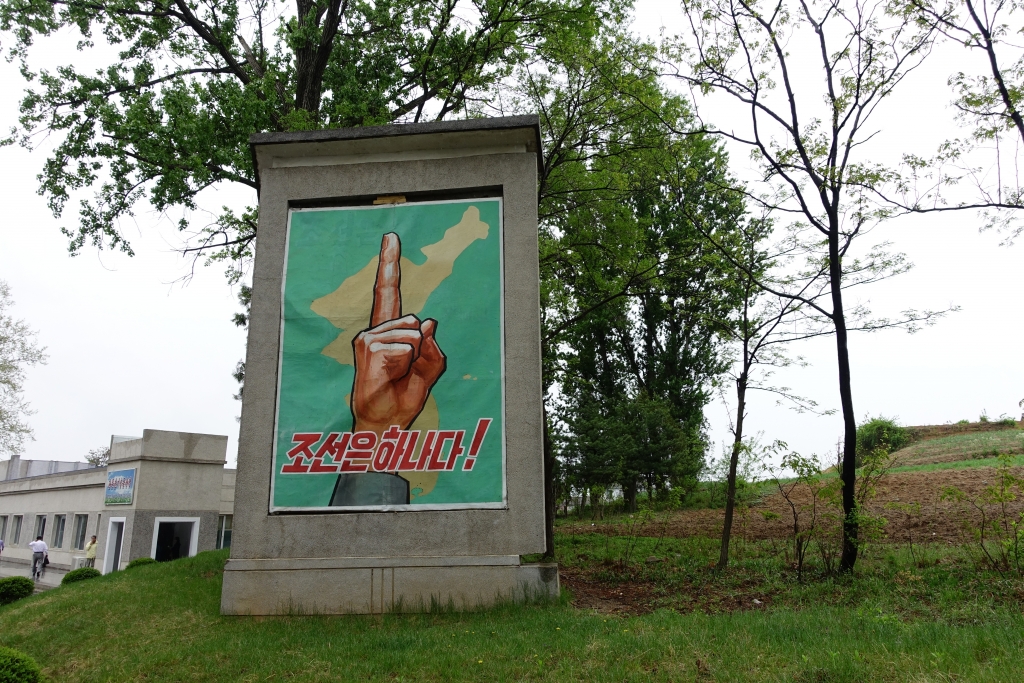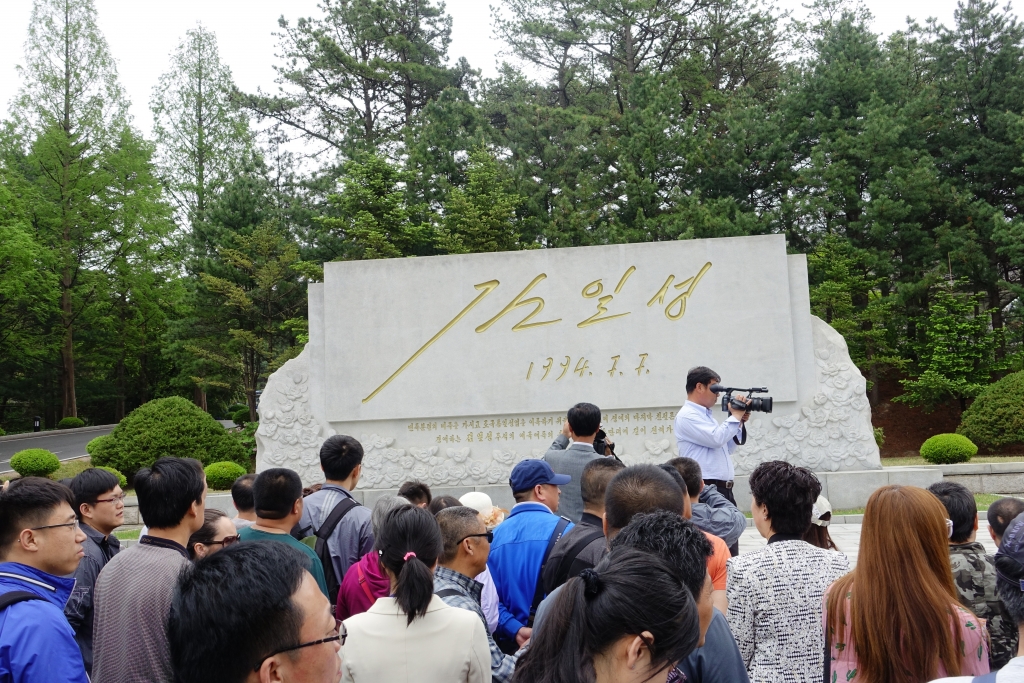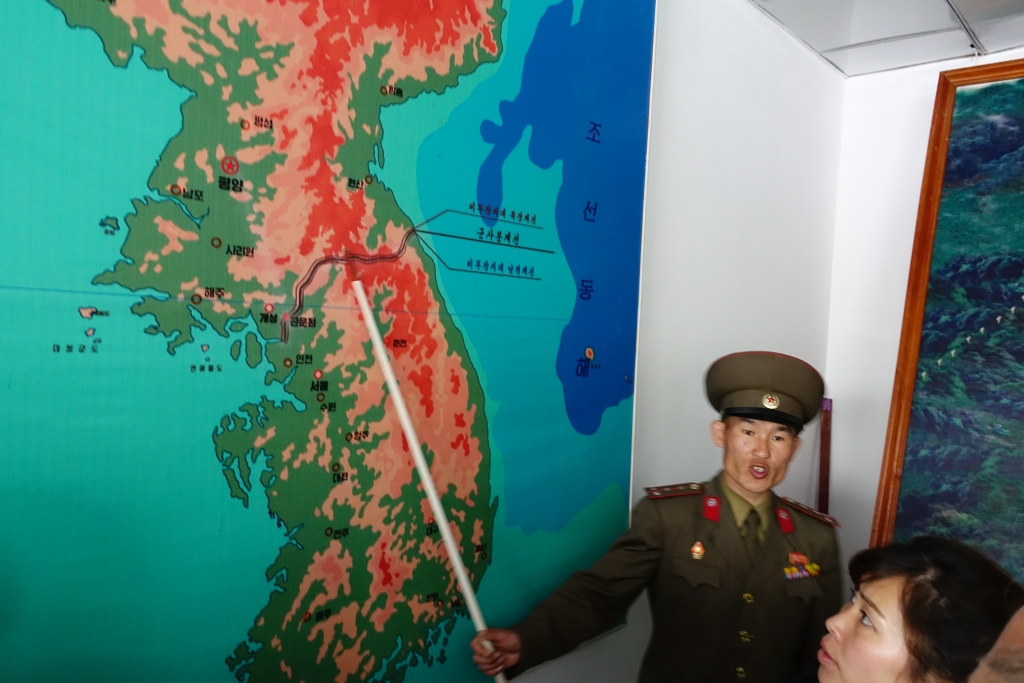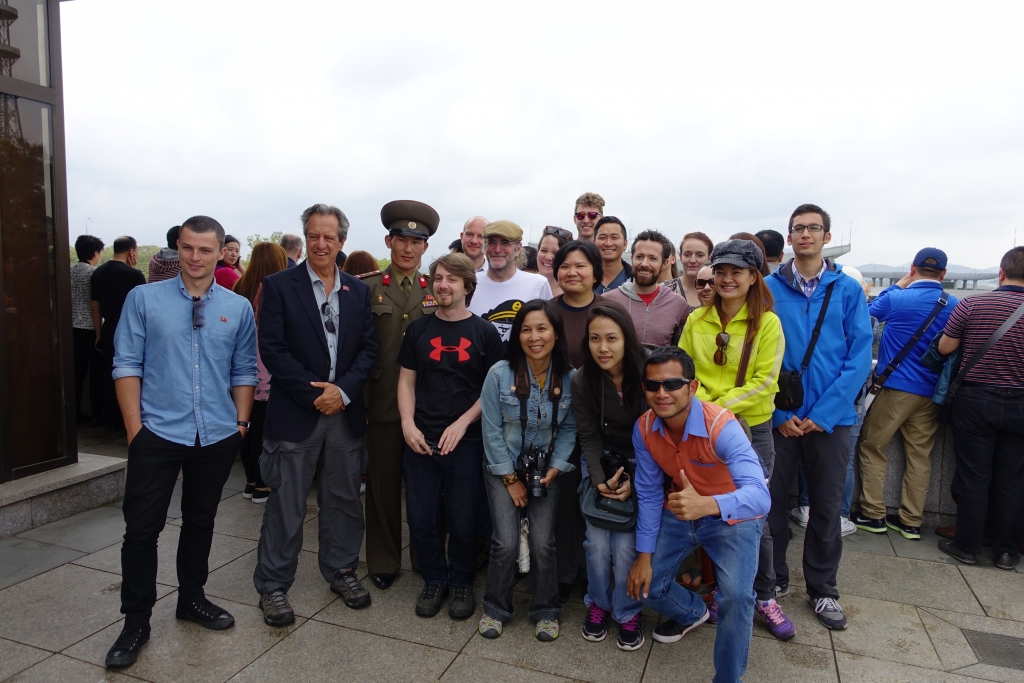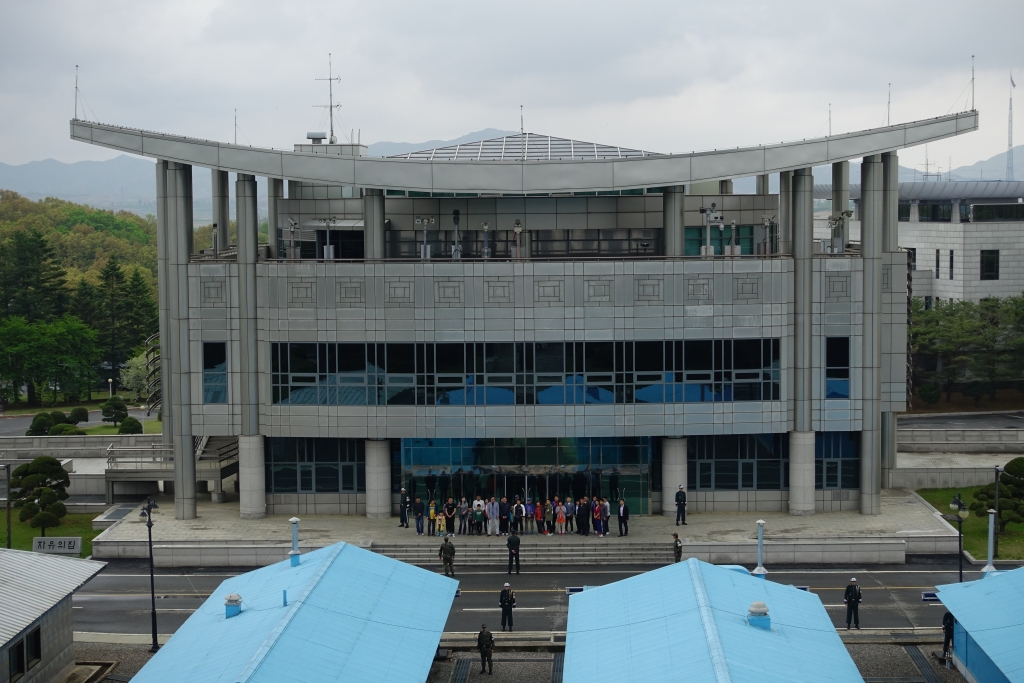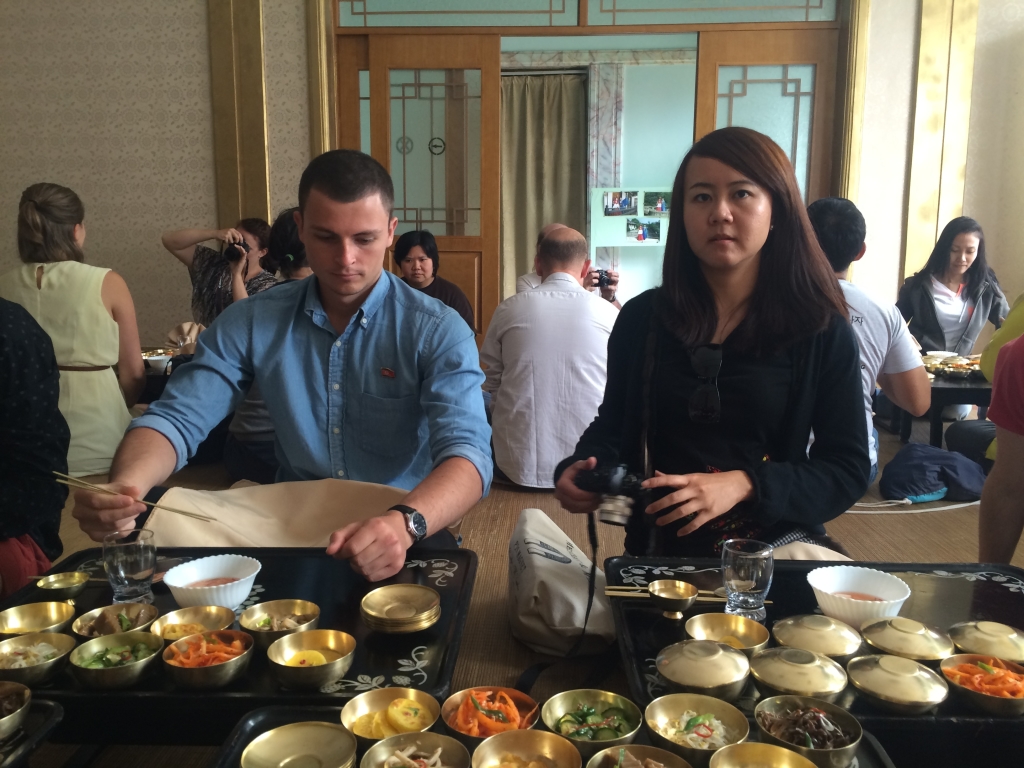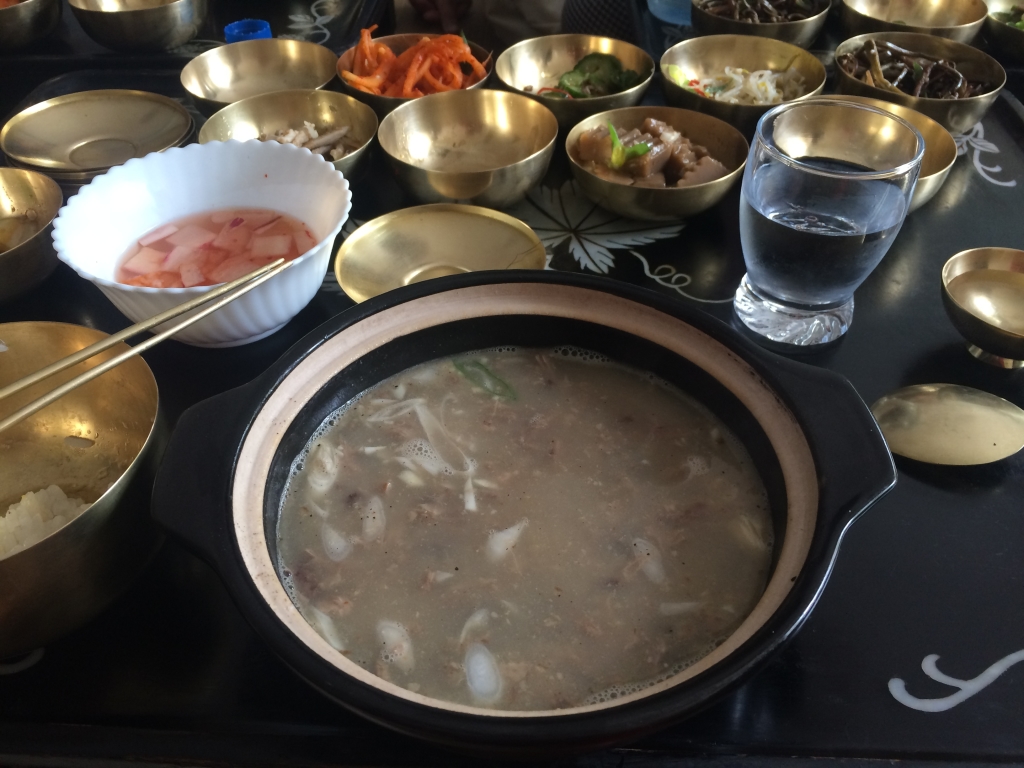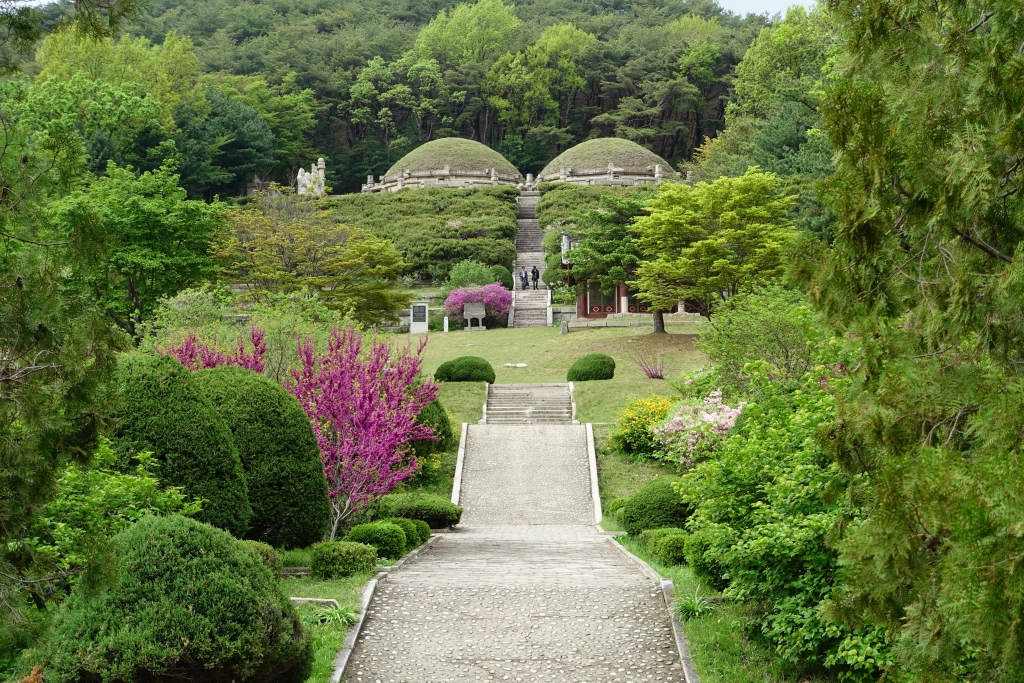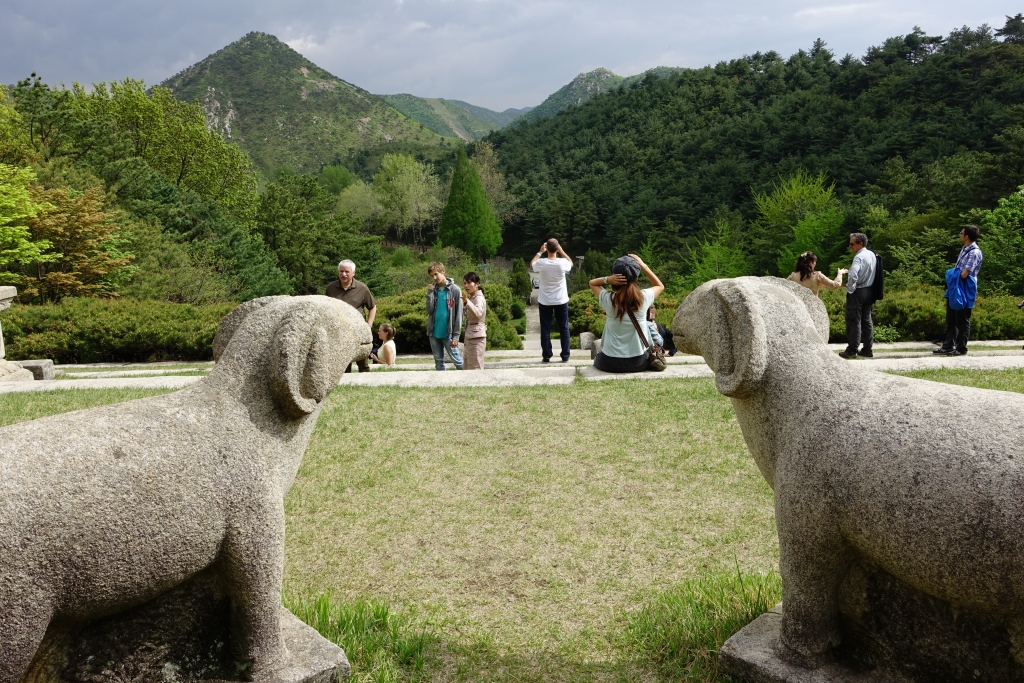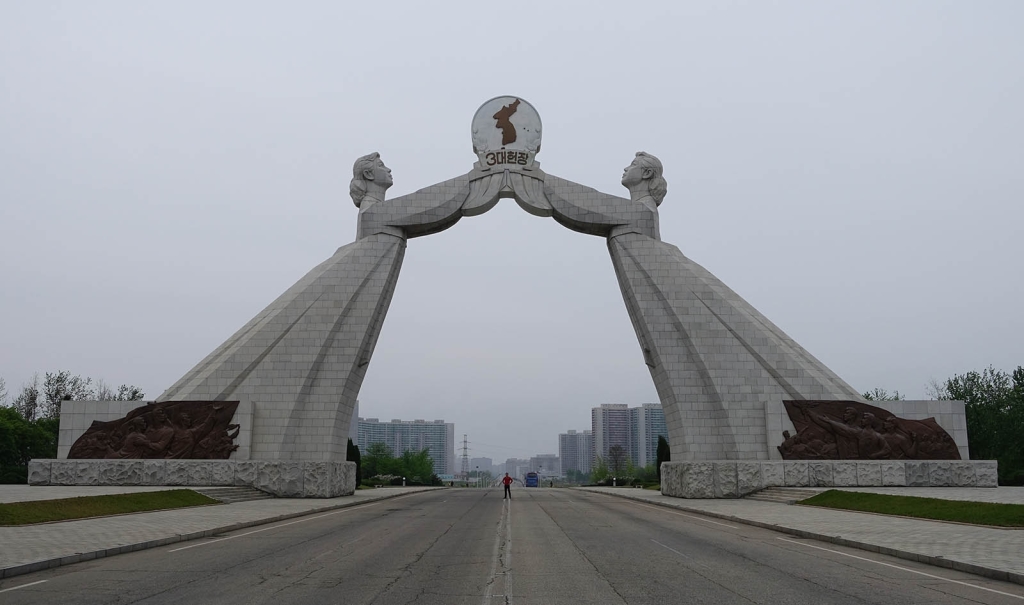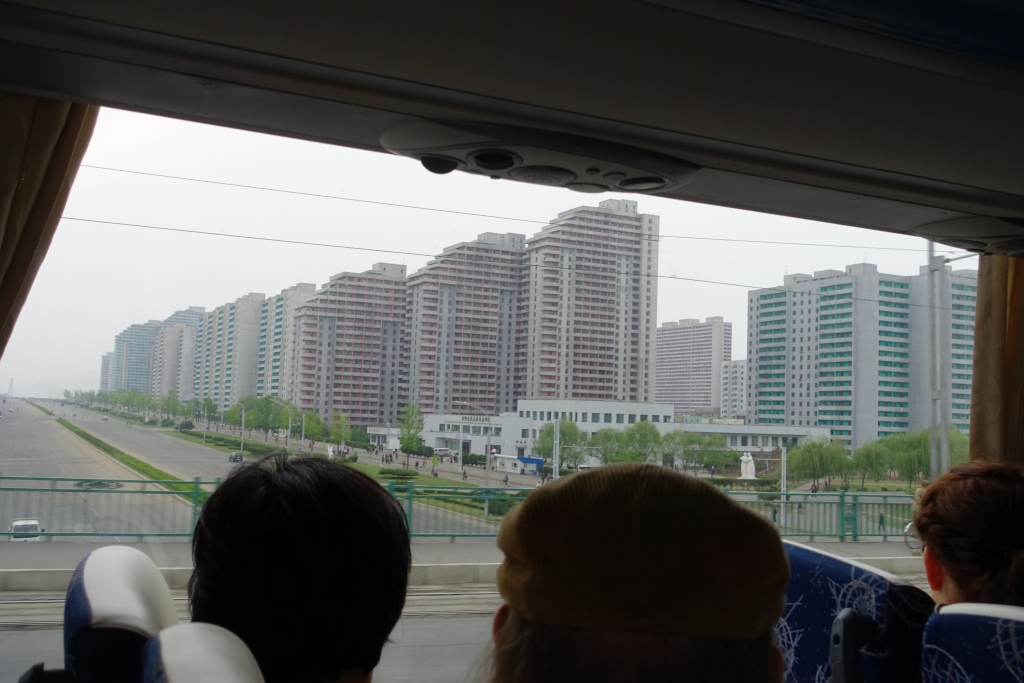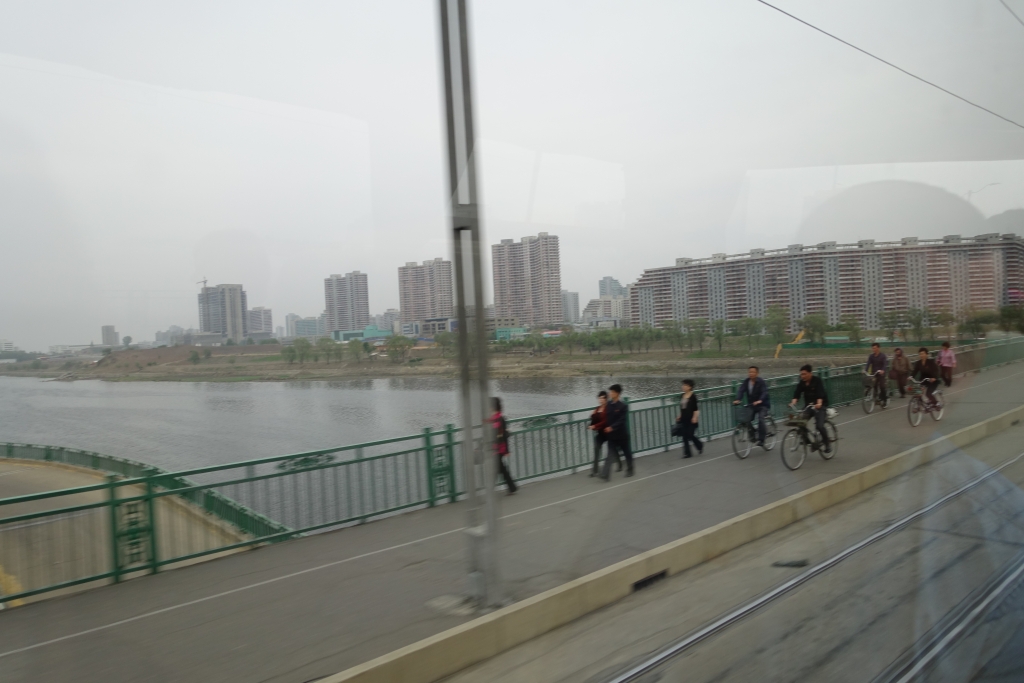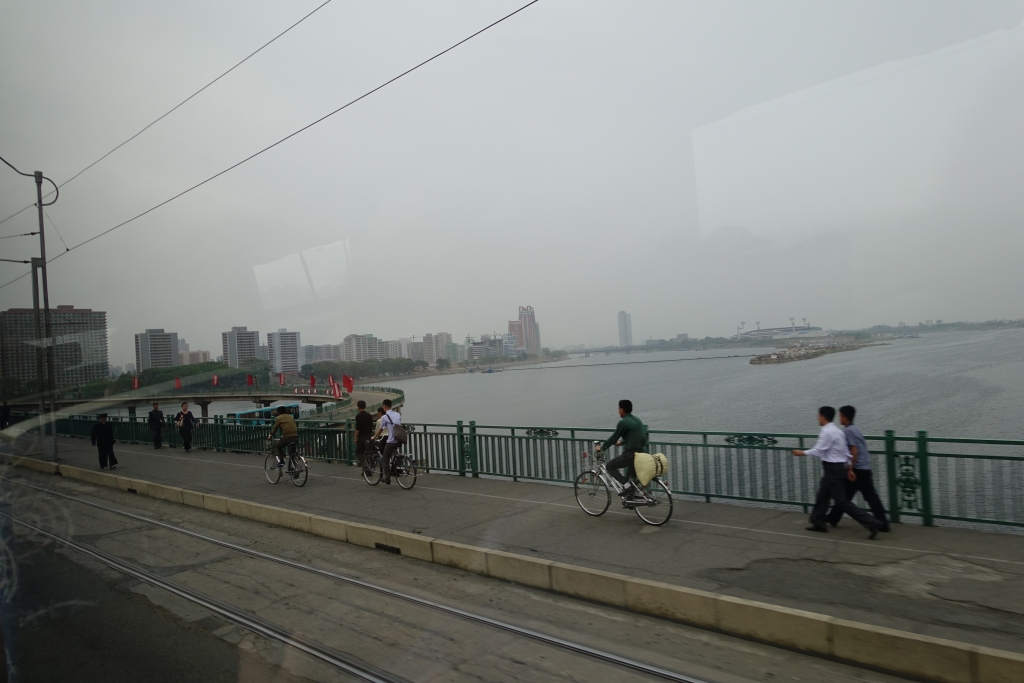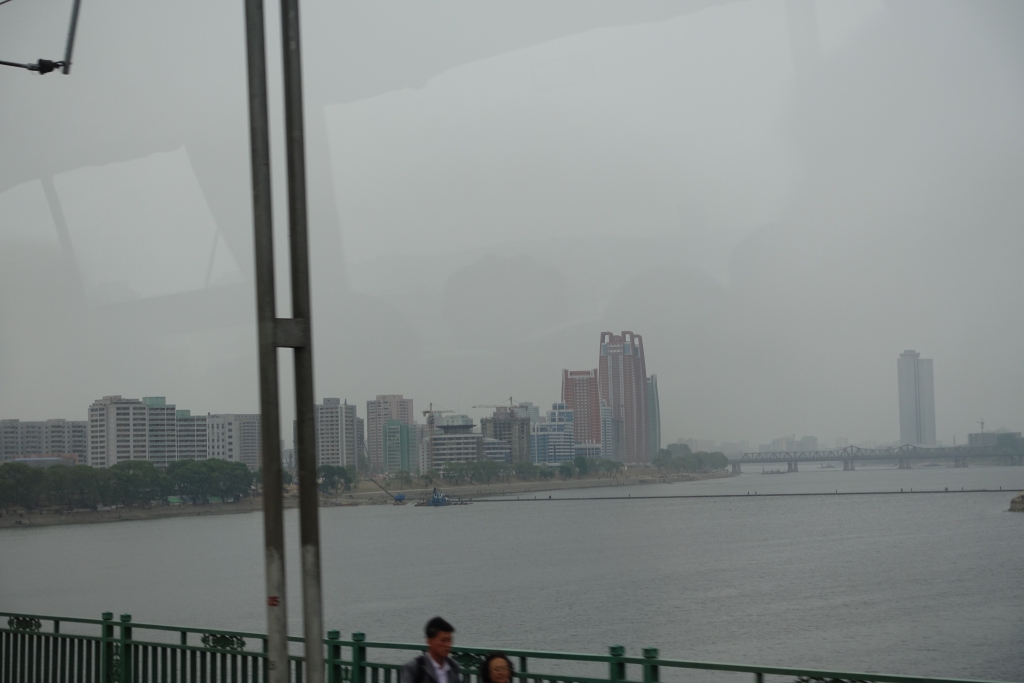Two years ago, I visited the Demilitarized Zone (DMZ) at the border of North and South Korea from the South side. I distinctly remember looking past the border at the stoic, squarish building on the North Korean side and wondering just what happens inside that building. I remember seeing a North Korean soldier and wondering what he was like.
Navigation:
I was about to find out. Today, our tour group would be visiting the DMZ from the North side.
After breakfast, we boarded the bus again at our hotel; same as every morning. As we headed to the DMZ, our guide talked more about what North Korea wants. They say that they want reunification, and the proposal is “two systems, one country.” They think that communism and capitalism can work together, and the North and South regions, as a single country, would be separate (but equal). I don’t think that could ever be the case, but that is what our guide told us they believe.
The overall feeling that I got from everything that we’ve been told and all the museums we’ve gone to was that North Korea feels that it’s the victim of a huge injustice primarily caused by the United States, and that their government and propaganda continues to dwell on things that occurred in the 1950s.
As we drove through the countryside passing by small towns and villages, our guide switched topics and started explaining more about life in the DPRK. She explained men retire when they’re 60 years old and women retire when they’re 55. After retirement, people stay at home, play chess, go fishing, and generally live on a pension. Some people, after they retire, go back to work doing jobs such as being a gateman for an apartment complex. They may also move back in with their kids after they get old so that they can be cared for by the family.
When someone dies in North Korea, they generally have a funeral ceremony for three days; the body is washed, sprayed with incense, and then placed in a coffin. During those three days, people will visit the son or daughter of the deceased. Visitors will bow three times and then pour rice wine three times on the body of the person who died, and after the funeral, everyone will have a meal together.
Once the ceremony is over, the body is then either buried or cremated. In the past, burial was a lot more common, but now cremation is what North Koreans generally choose. The owner of the tomb is the first son of the deceased, and this is why families generally want to have a boy.
After a long drive along the severely potholed roads and past numerous small towns and farms, we finally reached the DMZ area of Panmunjom from the North Korea side. This area was home to a number of buildings including a gift shop, a few bathrooms, and the original building that was built in 1953 to sign the Korean War Armistice Agreement. We were joined by throngs of other (mostly Chinese) tourists. A North Korean soldier was our guide, and he explained some of the history behind the buildings, we were set free to take pictures and look around a bit. He had a pretty calm demeanor, but said everything in a very matter-of-factly tone. The guides were translating what the soldier told us, and he would joke around with them once in a while. In other words, he seemed pretty normal. After that, we headed to the Joint Security Area, which is where the actual border between North and South Korea.
Memories of visiting the Joint Security Area two years ago from the South Korea side flashed through my mind. I remembered the uncomfortably tense atmosphere and the horror stories of people being kidnapped across the border by solders from the North. It was frightening, and there was a real sense that war could break out at any minute.
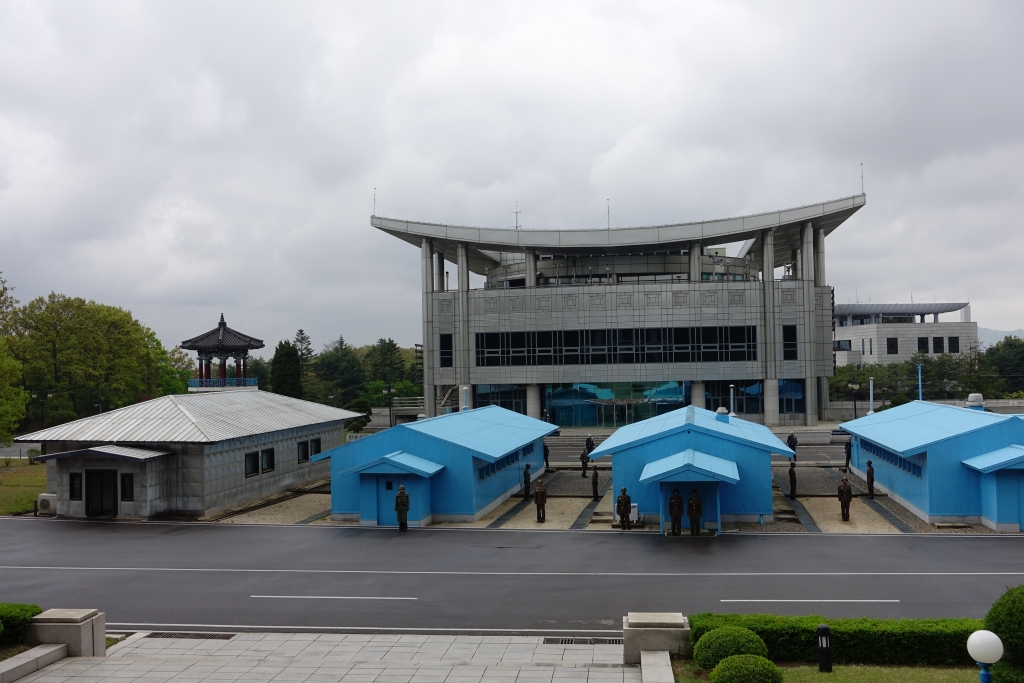
Coming from the North Korea side was different. The atmosphere on the North side was calm and carefree. The guides basically said that we could do whatever. We could smile, wave, even yell across the border. So we walked about and took tons of photos, waved across the border, posed for a group photo with the soldier, and just walked around the building’s large balcony for a while.
We saw a tour group on the South Korean side, neatly lined up and looking very tense. We waved across the border and yelled, “Hi!!” a number of times, but they just looked at us and did not flinch. The contrast in the attitudes on both sides was stark.
After a few minutes, we’d had our fun and it was time to get back on the tour buses. We said goodbye to our North Korean soldier guide and headed to one of the gardens for a traditional Korean lunch.
The traditional way of eating in Korea was to be seated on the ground and eat off of a tray that was on a small table. I don’t know how they did it back then because my legs were numb after a few minutes. The variety and flavor of the food was good, but nothing to write home about.
We had the option of trying dog soup, so I figured I’d try it. I mean, when in North Korea… amirite??
I ate a spoonful and it tasted terrible. One of the guys I was with on the tour described it perfectly… it’s like what you would think wet dog would taste like, complete with the aftertaste. I forced myself to drink a few more spoonfuls of the soup, but I just couldn’t bring myself to finish it.
Once lunch ended, we headed towards a few other landmarks. During this time, I showed one of the guides photos from the various places around the world that I had been to. He was fascinated by the photos. It was interesting seeing his eyes light up when seeing so many different foreign places. We eventually reached one of the landmarks, a historic tomb. The area was extremely well-kept and looked gorgeous.
We eventually got back into the city about an hour of driving. At the city limits stands a stone gate of two maidens holding up the country of Korea (North Koreans don’t believe that South Korea is a separate country).
Surprisingly, no one stopped us when we took this parody photo:
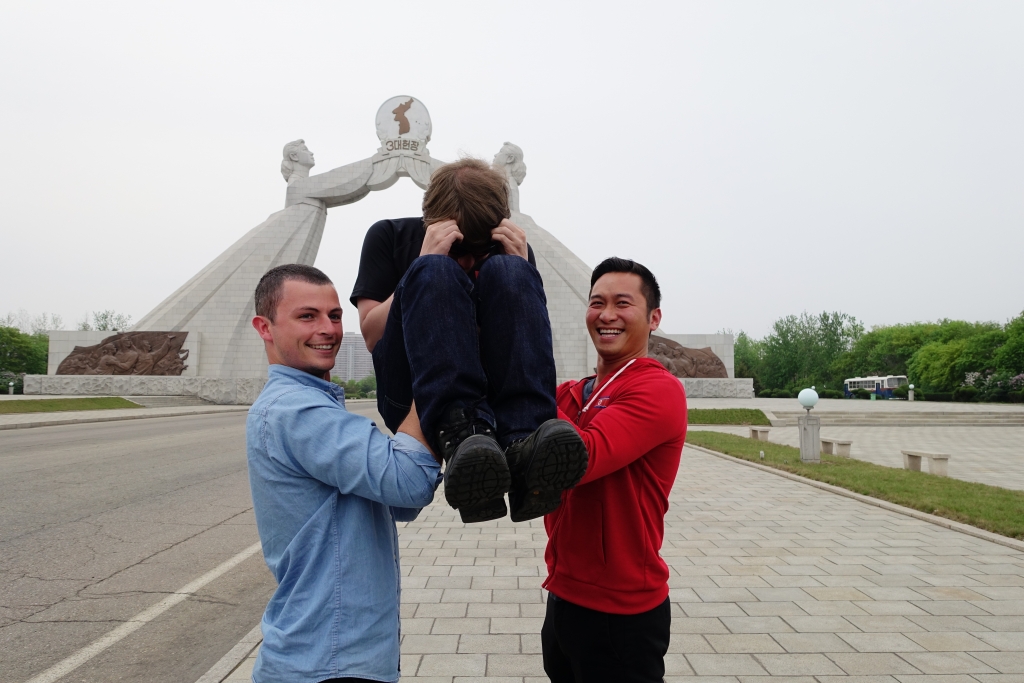
One of the most ridiculous things you will see in Pyongyang is the robotic movements of the traffic women. They are basically human traffic lights at intersections, but now that most of Pyongyang has actual traffic lights, they often stand on the side of the road or in their traffic circle at the middle of their intersection and do very little, unless there is a power outage (of which there are many). Check out this video (that I didn’t take):
We were driving around at 6:30pm on a Sunday. The roads were mostly empty, but there were tons of people playing in a nearby park, and a few people were walking and biking nearby. We were given the option of watching a North Korean movie or getting dropped off at the hotel to rest. I decided that I wanted to see the movie, which cost an extra 8 euros.
The title of the movie that we were about to watch was “O Youth!” It was a comedy made in 1996 about a family in which the four daughters were athletes, and the eldest son was a studious PhD student who was interested only in finishing his thesis. The mother was concerned about whether her son was going to ever get married, since he was already 30 years old, and the movie is about how he meets a girl who is not who he thinks she is. The storyline is predictably predictable, with heaps of very obvious propaganda thrown in, but it was still extremely interesting to watch.
In fact, you can watch it for free on YouTube.
After the movie ended, the entire group gathered together for drinks at one of the bars near our hotel. It would be our last night together, and our tour guides unleashed all sorts of vocabulary that we did not know they had. It was absolutely hilarious. They egged us on to “get shitfaced” or when we were to move along, they’d say, “let’s rock n’ roll!”
The next day, we woke up and got on the bus to head to the airport. As I boarded the plane, I thought about everything that I had experienced in the past five days. It’s true, the experience was a sheltered one; we were not able to go off on our own or see things that the government didn’t want us to see. Despite that, I felt that I now had some context and knowledge for when I watch or read the news about the country to make my own conclusions. I truly didn’t know what to expect when I entered North Korea, but I left with a feeling that, even though we all live our lives differently than they do, we all still share similar hopes, dreams, feelings, and wishes. Regardless of where we come from, we’re all still people, after all.
-END-
